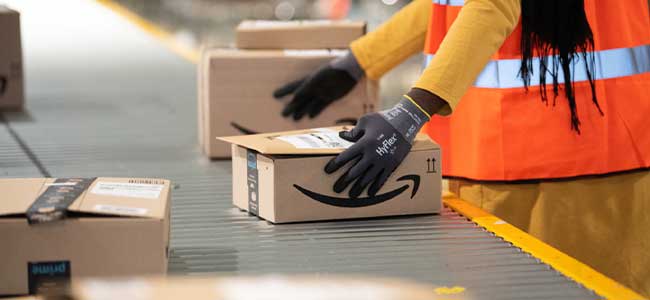
Amazon 2022 Warehouse Worker Injury Rates Decreased from 2021 but Were Higher Than Other Warehouses, Report Shows
In 2022, the injury rate was 7.0 per 100 workers, and the serious injury rate was 6.6 per 100 workers.
- By Alex Saurman
- Apr 13, 2023
Amazon warehouses may have seen lower injury rates in 2022 compared to 2021, but this number is still much higher than the rate at other warehouses, a new report shows.
The report from Strategic Organizing Center (SOC) titled “In Denial: Amazon’s Continuing Failure to Fix Its Injury Crisis,” lists the 2022 injury rate at Amazon warehouses as 7.0 per 100 full-time equivalent workers (FTE), which is lower than the 2021 rate of 7.7 per 100 FTE. This is still higher than the 2022 rate at non-Amazon warehouses (4.1 per 100 FTE).
When looking at what the SOC calls "serious injury rates," the report says that this 2022 rate at Amazon warehouses was 6.6 per 100 FTE. (In 2021, the rate was 6.8 per 100 workers.) At other warehouses, the serious injury rate in 2022 was only 3.2 per 100 FTE.
“Preventing injuries isn’t rocket science. If Jeff Bezos can send himself to outer space, he should be able to make sure Amazon workers aren’t hurt on the job,” said Eric Frumin, the SOC’s director of health and safety, in a news release. “Even in the midst of multiple federal investigations and a rising tide of collective worker action, the company refuses to take responsibility and instead relies on cherry-picked data to obscure the reality that their obsession with speed comes at the expense of safety.”
Serious injuries at Amazon warehouses made up 53 percent of all serious injuries reported across the industry, per the report. The E-commerce company employed 36 percent of the entire warehouse industry in 2022.
The SOC report defined serious injuries as those “categorized as either light duty or lost time injuries—that is, injuries where workers were hurt so badly that they were either unable to perform their regular job functions (light duty) or forced to miss work entirely (lost time),” However, according to Amazon, “serious injury rate” is not a regulatory metric.
Out of the three ways OSHA measures injuries—recordable injury rates (RIR), days away, restricted, or transferred rates and Lost Time Incident Rates (LTIR)—the e-commerce company said it believes RIR and LTIR are the most useful for comprehending how injuries occur and mitigating or preventing them. As for serious injuries, Amazon said LTIR is a better measure.
Per Amazon’s 2022 Safety, Health, and Well-Being Report, in 2021, the company’s RIR in U.S. warehouses was 7.6. The warehousing and storage average was 6.7. Amazon’s LTIR at U.S. warehouses was 1.7 while the warehousing and storage average was 2.5.
“The safety and health of our employees is, and always will be, our top priority, and any claim otherwise is inaccurate,” said Amazon spokesperson Kelly Nantel in a statement. “It’s unsurprising that a self-interested group like this would work to twist the facts to paint an inaccurate picture. While we know we have more work to do, the truth is clearly outlined in our safety report and we encourage anyone to both tour our facilities and read our safety report. That report shows that since 2019, the recordable injury rate across our network has dropped more than 23% and the lost time injury rate has dropped more than 53%. We’re proud [of] the progress made by our team and we’ll continue working hard together to keep getting better every day.”
SOC’s report used data Amazon submitted to OSHA.
SOC is an alliance of the Service Employees International Union, Communications Workers of America and United Farmworkers of America. They represent more than 2.5 million workers.
Photo Credit: Frederic Legrand - COMEO / Shutterstock.com